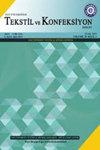利用整数规划模型平衡不同操作约束下的衬衫生产线
IF 0.7
4区 工程技术
Q4 MATERIALS SCIENCE, TEXTILES
引用次数: 0
摘要
产能的有效利用对于服装企业的成本效益和为客户提供及时的服务至关重要。装配线效率的提高与运营成本的降低有关。因此,平衡装配线的主要目的是尽可能快地制造有利可图的产品。本文研究了某服装公司缝制部门在劳动力和机器约束下的单模装配线平衡问题。我们开发了一个整数规划(IP)模型来优化平衡衬衫生产线,考虑生产线每个阶段的并行机器和各种操作约束,如周期时间和优先级约束,任务机器资格,可用的操作员数量。IP模型可以最小化开放工作站的数量,或者两者兼而有之,最小化开放工作站的数量,并在尽可能靠近彼此的子装配部件中分配任务。利用LINGO 15.0优化软件对模型进行了多种场景下的运行。此外,我们还使用排名位置权重法(RPWM)来平衡衬衫生产线。IP模型在所有情况下都优于RPWM结果,与RPWM的38个站点和75.4%的平衡效率相比,IP模型发现33个站点和86.8%的效率。本文章由计算机程序翻译,如有差异,请以英文原文为准。
Balancing the shirt production line under different operational constraints using an integer programming model
Efficient use of capacity is significant to enable apparel businesses to work cost-effectively and provide timely service to their customers. The increase in assembly-line efficiency is associated with lower operating costs. Therefore, the main purpose of balancing assembly lines is to manufacture products as profitable and as quickly as possible. In this study, we consider a single-model assembly line balancing problem with workforce and machine constraints in the sewing department of an apparel company. We develop an integer programming (IP) model to optimally balance the shirt production line, considering parallel machines in each stage of the line and various operational constraints such as cycle time and precedence constraints, task machine eligibility, the number of operators available. The IP model can either minimize the number of open workstations or both, minimize the number of open workstations and assign tasks in subassembly parts as close to each other as possible. The model has been run under various scenarios using LINGO 15.0 optimization software. Additionally, we have balanced the shirt production line using the Ranked Positional Weight Method (RPWM). The IP model outperforms the RPWM results across all scenarios and finds 33 stations and 86.8% efficiency compared to 38 stations and 75.4% balance efficiency with the RPWM.
求助全文
通过发布文献求助,成功后即可免费获取论文全文。
去求助
来源期刊

Tekstil Ve Konfeksiyon
工程技术-材料科学:纺织
CiteScore
1.40
自引率
33.30%
发文量
41
审稿时长
>12 weeks
期刊介绍:
Tekstil ve Konfeksiyon, publishes papers on both fundamental and applied research in various branches of apparel and textile technology and allied areas such as production and properties of natural and synthetic fibers, yarns and fabrics, technical textiles, finishing applications, garment technology, analysis, testing, and quality control.
 求助内容:
求助内容: 应助结果提醒方式:
应助结果提醒方式:


